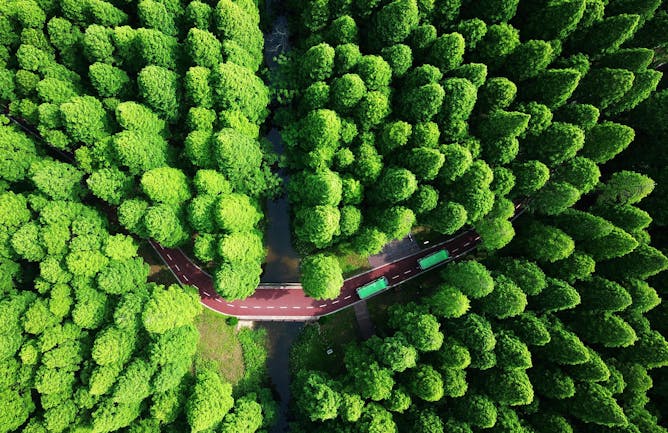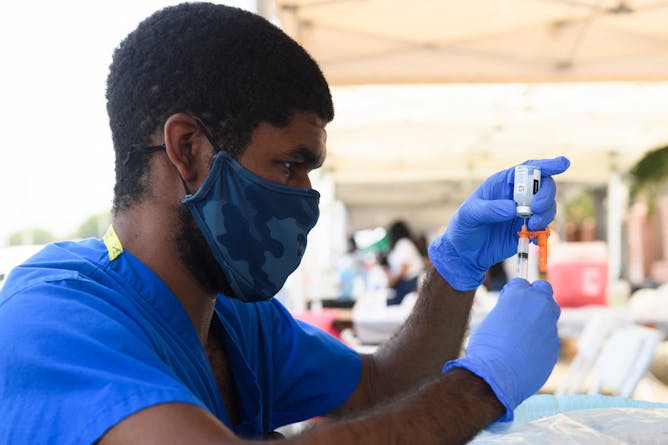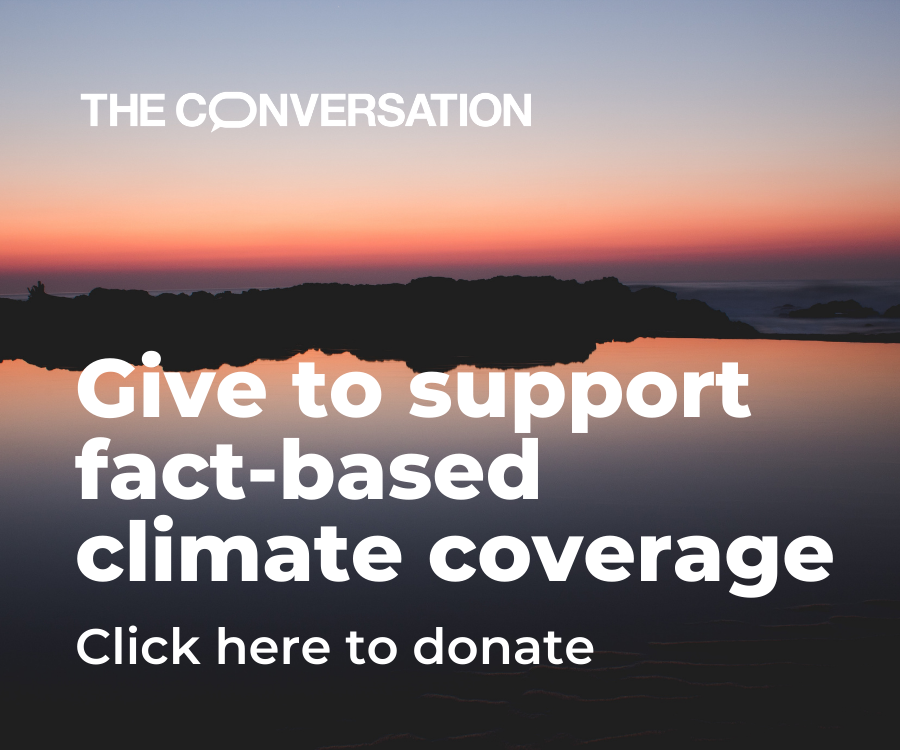|
|
|
|
At the COP26 climate conference, which is scheduled to finish this week, many countries and companies have announced pledges to reach “net-zero emissions.” Often, these targets rely on nature to do a lot of the work, whether it’s planting trees or protecting farmland to absorb carbon dioxide. Will this work at a large enough scale? Two scholars who have probed this question and surveyed the research explain the problem with these many net-zero emissions pledges. Quite simply, they write, “nature cannot balance out ongoing fossil emissions.” For our ongoing global coverage of COP26, see this page.
With Thanksgiving coming up, many of us are facing tricky questions about social gatherings, even with people who are vaccinated against COVID-19. Can testing play a role, particularly now that less expensive rapid antigen tests are widely available? University of Massachusetts molecular biologist Nathaniel Hafer breaks down the difference between antigen tests and the gold-standard PCR tests to give you some guidance on how to proceed.
Will SARS-CoV-2 become endemic and appear year after year like the common cold and the flu? Three scientists from the University of Colorado Boulder probe this question and explain the factors, such as the R0 transmission rate, that will determine whether this becomes the case. Many scientists believe the virus that causes the disease will indeed settle into “endemic patterns of transmission,” they write. At the same time, they note, the course of the pandemic is still uncertain, and “our post-pandemic future will heavily depend on how the virus evolves over the coming years.”
Also in this week’s science and research news:
If there’s a subject or story you’d like our team of science editors to investigate, please reply to this email.
|

|
Martin La Monica
Director of Editorial Projects and Newsletters
|
|

Companies’ net-zero pledges count on vast expanses of forest to hold carbon so they can continue emitting.
AFP via Getty Images
Doreen Stabinsky, College of the Atlantic; Kate Dooley, The University of Melbourne
Yes, trees and soils can absorb and store carbon, but the carbon doesn’t stay stored forever. That’s one of the problems with how net-zero plans for the climate are being designed.
|

All COVID-19 tests start with a sample, but the scientific process goes very differently after that.
Morsa Images/Digital Vision via Getty Images
Nathaniel Hafer, UMass Chan Medical School
The two types of COVID-19 tests – antigen and PCR – work in very different ways, which is why one is fast but less accurate and the other is slow and precise.
|

The best way to stop a contagious virus like COVID-19 is through a worldwide vaccination program.
Patrick T. Fallon/AFP via Getty Images
Sara Sawyer, University of Colorado Boulder; Arturo Barbachano-Guerrero, University of Colorado Boulder; Cody Warren, University of Colorado Boulder
Some viruses go extinct, while others stick around. The virus that causes COVID-19 seems likely to remain with us for the long term.
|
|
|
-
Jill Hopke, DePaul University
Misinformation about climate change has been spreading in other ways, and social media companies have been reluctant to stop it.
-
Mayank Kejriwal, University of Southern California
Machine learning algorithms can help public health officials identify areas of high vaccine hesitancy by ZIP code to better target messaging and outreach and counter misinformation.
-
Sonja Klinsky, Arizona State University
Climate justice is about both where emissions come from and who suffers the consequences.
-
Jeff Nesbit, Yale University
Of the big pledges so far at the UN climate conference, cutting methane could have the most immediate impact.
-
Janelle R. Goodwill, University of Chicago
The evidence is growing that experiencing both systemic and everyday race-based discrimination may lead some Black Americans to become depressed and think about suicide.
-
Gabriel Filippelli, IUPUI
The Centers for Disease Control has announced a new, stricter standard for lead poisoning in children, which will more than double the number of kids considered to have high blood lead levels.
-
Jianjun Yin, University of Arizona
Climate change is making ocean levels rise in two ways. It’s a problem that will endure even after the world stabilizes and slashes greenhouse gas pollution.
|
|
| |
| |
| |
| |

|
| |
| |
| |
| |
| |
| |
| |
| |
|
|
|
|
|
|
|